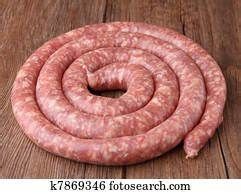Boerewors is a type of sausage that originated in South Africa and is an important part of South African, Zimbabwean, Zambian, Botswanan, and Namibian cuisine. The name "boerewors" is derived from the Afrikaans words "boer" (a South African of Dutch or Huguenot descent) and "wors" (meaning "sausage"). Boerewors must contain at least 90% meat or fat from beef, pork, lamb, or goat. The remaining 10% consists of spices and other ingredients. The fat content in boerewors should not exceed 30%, and it should not contain offal or any mechanically recovered meat pulp. Traditional boerewors is made from coarsely minced beef (sometimes combined with minced pork, lamb, or both) and spices such as toasted coriander seed, black pepper, nutmeg, cloves, and allspice
Note: Boerewors is most traditionally braaied (grilled over charcoal or wood), but it can also be cooked under an electric grill, roasted in an oven, or fried in a pan. When cooking boerewors, it's best to avoid pricking the casing to prevent the wors from drying out during preparation.
Variations: There are many varieties of boerewors available. Some examples include garlic wors, kameeldoring (camel thorn), Karoowors (sausage from the Karoo region in South Africa), and spekwors (made with extra cubed pork fat). Other ingredients such as cheese and chili peppers can also be added to create different flavors.



